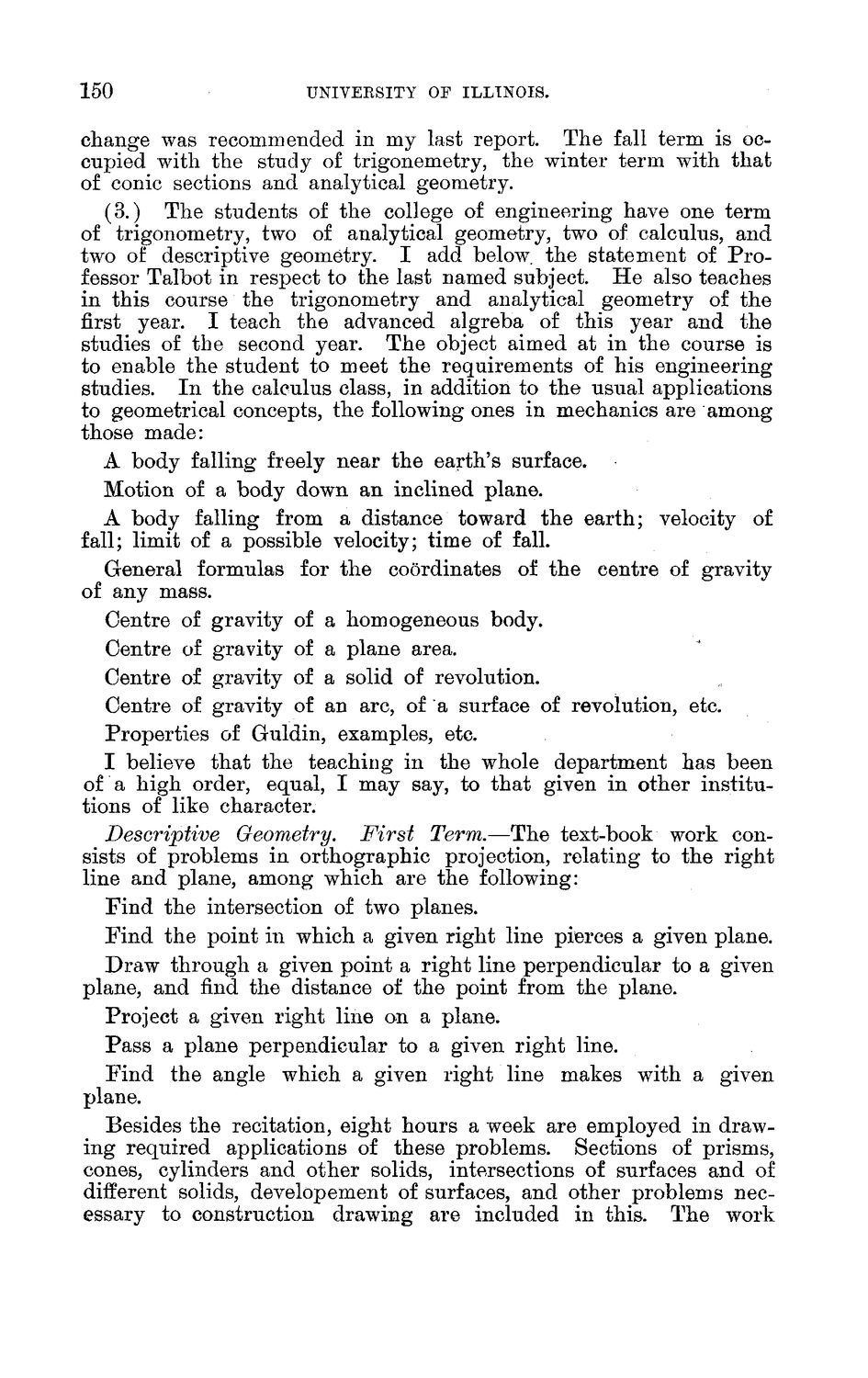| |
| |
Caption: Board of Trustees Minutes - 1888
This is a reduced-resolution page image for fast online browsing.

EXTRACTED TEXT FROM PAGE:
150 UNIVERSITY OF ILLINOIS. change was recommended in my last report. The fall term is occupied with the study of trigonemetry, the winter term with that of conic sections and analytical geometry. (3.) The students of the college of engineering have one term of trigonometry, two of analytical geometry, two of calculus, and two of descriptive geometry. I add below, the statement of Professor Talbot in respect to the last named subject. He also teaches in this course the trigonometry and analytical geometry of the first year. I teach the advanced algreba of this year and the studies of the second year. The object aimed at in the course is to enable the student to meet the requirements of his engineering studies. I n the calculus class, in addition to the usual applications to geometrical concepts, the following ones in mechanics are among those made: A body falling freely near the earth's surface. Motion of a body down an inclined plane. A body falling from a distance toward the earth; velocity of fall; limit of a possible velocity; time of fall. General formulas for the coordinates of the centre of gravity of any mass. Centre of gravity of a homogeneous body. Centre of gravity of a plane area. Centre of gravity of a solid of revolution. Centre of gravity of an arc, of a surface of revolution, etc. Properties of Guldin, examples, etc. I believe that the teaching in the whole department has been of a high order, equal, I may say, to that given in other institutions of like character. Descriptive Geometry. First Term.—The text-book work consists of problems in orthographic projection, relating to the right line and plane, among which are the following: Find the intersection of two planes. Find the point in which a given right line pierces a given plane. Draw through a given point a right line perpendicular to a given plane, and find the distance of the point from the plane. Project a given right line on a plane. Pass a plane perpendicular to a given right line. Find the angle which a given right line makes with a given plane. Besides the recitation, eight hours a week are employed in drawing required applications of these problems. Sections of prisms, cones, cylinders and other solids, intersections of surfaces and of different solids, developement of surfaces, and other problems necessary to construction drawing are included in this. The work
| |